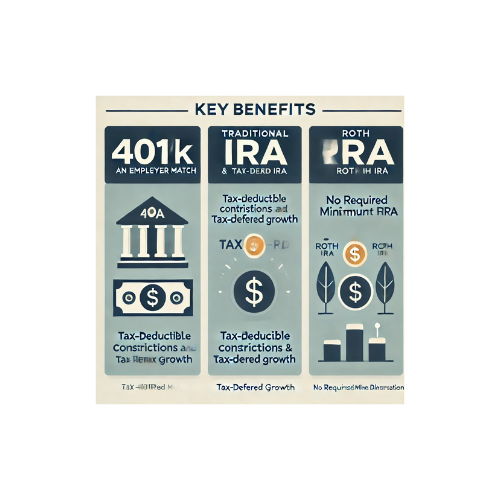Understanding 401(k)s, Traditional IRAs, and Roth IRAs: Which Is Right for You?
Retirement planning can feel like navigating a maze of options—401(k)s, Traditional IRAs, Roth IRAs—each with unique benefits and limitations. Choosing the right account is crucial for securing your financial future. But don’t worry, this guide will help you understand the key differences, decide which account suits your goals, and learn how to maximize your savings.
In my experience, many investors know they should be saving for retirement but often feel overwhelmed by the options. I’ve found that once clients understand these accounts, they feel empowered to take actionable steps toward a more secure retirement.

Why Listen to Me?
As a CERTIFIED FINANCIAL PLANNER™ professional, I’ve worked with countless clients to build tailored retirement strategies. Investors I’ve worked with appreciate my ability to break down complex topics into simple, actionable advice. Whether you’re starting from scratch or refining your plan, I’m here to guide you.
👉 How would it feel to know exactly when you can retire and how much you can spend without running out of money? Let’s talk. In a complimentary call, I’ll walk you through your numbers and show you strategies that could help you retire with more confidence and less stress. Schedule Your Call
Key Takeaways
- A 401(k) is an employer-sponsored account offering high contribution limits and potential matching.
- Traditional IRAs and Roth IRAs are individually managed accounts with unique tax advantages.
- Using a combination of accounts can maximize savings and diversify tax exposure in retirement.
How Do 401(k)s, Traditional IRAs, and Roth IRAs Compare?
401(k): Employer-Sponsored Savings
• Required Minimum Distributions (RMDs): You must start withdrawing funds at age 73.
In my experience, failing to maximize an employer match is one of the biggest missed opportunities in retirement planning. Even if your budget is tight, I recommend contributing enough to capture the full match—it’s essentially free money.
Traditional IRA: Tax-Deferred Flexibility
• RMDs Apply: Like a 401(k), you’re required to start withdrawing funds at age 73.
Roth IRA: Tax-Free Growth
• No RMDs: Unlike Traditional IRAs and 401(k)s, you’re not required to withdraw funds at any age.
In my experience, Roth IRAs are an excellent option for younger investors in lower tax brackets or those looking to diversify their tax exposure in retirement.

Which Account Should You Choose?
• Use a 401(k) if: Your employer offers one, especially if there’s a match.
• Choose a Traditional IRA if: You want a tax deduction now and don’t qualify for a Roth IRA due to income.
• Opt for a Roth IRA if: You’re in a lower tax bracket now and want tax-free income later.
How to Maximize Your Retirement Savings
In my experience, using a 401(k) alongside a Traditional or Roth IRA allows you to save more while diversifying your tax advantages.
If your employer offers matching contributions, focus on contributing enough to capture the full match first. This is one of the easiest ways to boost your savings.
Set up automatic contributions to ensure consistency. Many clients I’ve worked with are surprised by how much they can save when it becomes automatic.
As your income grows, aim to increase your contributions. For example, if you get a 3% raise, consider increasing your retirement savings by 1%.
Common Mistakes to Avoid
The earlier you start saving, the more time compound growth has to work its magic. Even small contributions can grow significantly over decades.
Many investors overlook Roth IRAs because they don’t offer an immediate tax deduction. However, the long-term benefits of tax-free growth often outweigh this.
Be mindful of account fees, especially in employer-sponsored 401(k) plans. High fees can erode your returns over time.
FAQs
Can I contribute to multiple accounts?- Yes, you can contribute to both a 401(k) and an IRA, but your IRA contribution may not be deductible if you’re covered by a workplace plan and earn above certain limits.
How do I decide between a Traditional IRA and a Roth IRA?
- In my experience, the decision often comes down to your current tax bracket versus your expected tax bracket in retirement. A Traditional IRA offers immediate tax benefits, while a Roth IRA provides tax-free growth.
What if I’m behind on retirement savings?
- It’s never too late to start. Consider maximizing contributions, including catch-up contributions if you’re 50 or older, and adjust your spending to save more.
Conclusion
Understanding 401(k)s, Traditional IRAs, and Roth IRAs is key to building a strong retirement plan. Each account offers unique benefits, and using them strategically can help you maximize savings and minimize taxes.
👉 How would it feel to know exactly when you can retire and how much you can spend without running out of money? Kind of crazy that you just found this blog… and your next step might be booking a complimentary call. In that call, we’ll explore your numbers and see what’s truly possible for you. Schedule Your Call
Sources:
https://smartasset.com/retirement/ira-vs-roth-ira-vs-401k-key-differences
https://www.investopedia.com/ask/answers/100314/whats-difference-between-401k-and-roth-ira.asp
https://smartasset.com/retirement/roth-ira-vs-401k-whats-the-difference
https://www.fidelity.com/learning-center/smart-money/can-you-have-a-roth-ira-and-a-401k
https://www.irs.gov/retirement-plans/roth-comparison-chart
**Here is an article where I talk about staying calm during periods of volatility
**Here is another article where I was quoted as well related to this
Disclaimer: Case studies are hypothetical and do not relate to an actual client of Lock Wealth Management. Clients or potential clients should not interpret any part of the content as a guarantee of achieving similar results or satisfaction if they engage Lock Wealth Management for investment advisory services.
